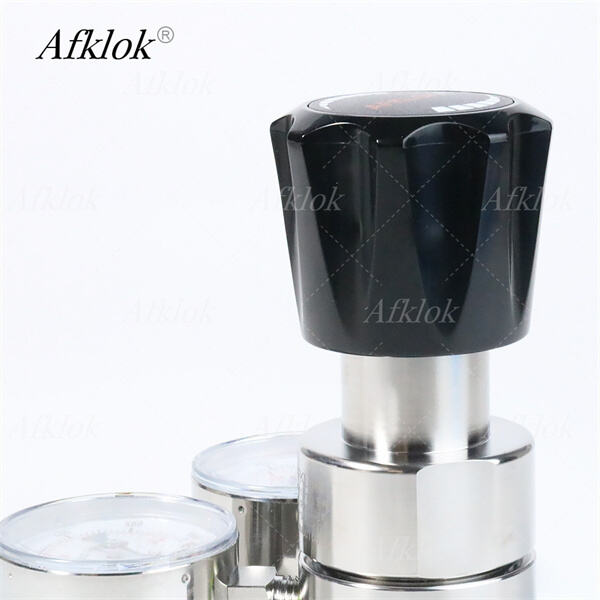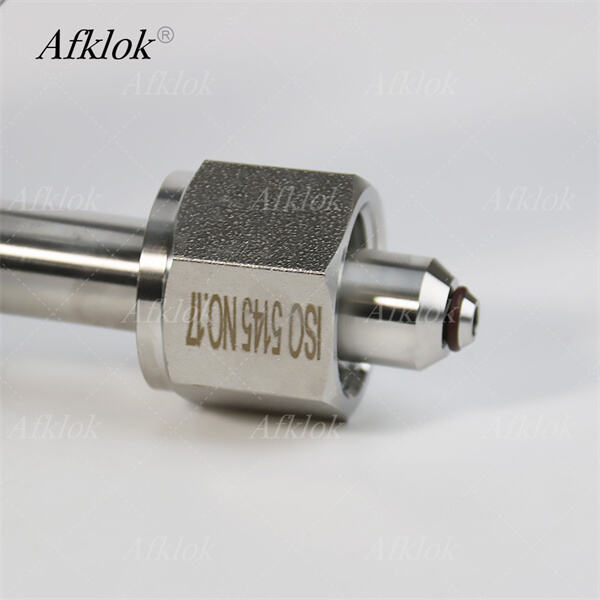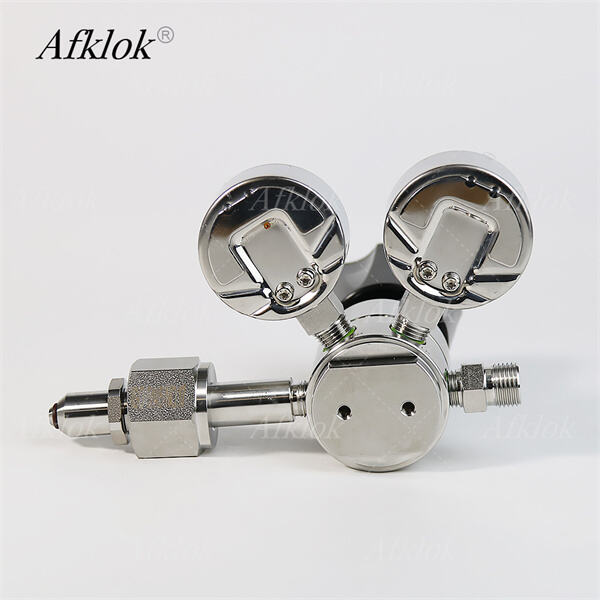Gaz, gündəlik həyatımızda çox vacibdir. Onu yiyecek pişirdikdə, evimizi istifadə etdikdə və bir çox digər fəaliyyətlərdə istifadə edirik. Amma bəzən gaz regulyatorlarımızda «düşük basınç» adlanan şeyi hiss edirik. Və sudden, gaz gəlmir ki, onun gəlməsi lazımdır, bu da çox sıxışdırıcı xətalara səbəb olur. Bu, düşük gaz basınçuna görə faydalı bir nəzarətdir ki, problemləri ortaya çıxardıqca tanıyıb və həll edə bilək.
Gaz regulyatorunda aşağı basınç ilə bağlı problemləri özünüz şəxsiyyətə salaraq aşkarlaya bilərsiniz və əgər aşağı basınçın əsas səbəblərini təyin edə bilərsinizsə, bu səbəbləri də sürətlə həll edə bilərsiniz. Ən adil yol regulyatoru yaxınlıqla nümayiş etməkdir. Onun pozulub-pozulmadığını və ya ürəyirlər toz və qoturğunla bağlı olub-olmadığını yoxlayın. Bu, gaz akışını bloklaya bilər. Növbəti addımda, gaz qutusunu yoxlayın. O boş və ya boş ola bilməyənə yaxındır? Qutuda kifayət qədər gaz qalıbsa, növbəti addıma keçə bilərik.
Qaz xətlərində süzülmələr olub-olmadığını yoxlayın. Bəzən, qazı təhvil etən xətlər kiçik dərəclər və ya qatqlar yaradır, bu da qazın süzülmesinə səbəb olur. Bu, daha aşağı basınğın başqa bir səbəbidir. Son olaraq, sövülmüş və ya bozulmuş xətləri axtarın. Əgər köhnə xətlər zəifdirsə və ya düzgün işləmirslə, qaz basıncı da təsirlənə bilər.
Qaz regulyatorları çoxlu səbəblərdən aşağı basınca maruz qalabilir. Bir olası səbəb isə, regulyatorun özü sövülmüş və ya blok edilib. Blok edilmiş regulyator, onu bərabər akışdan qorxan bir şeyin var olduğu, qazın azaddan akmasını dayandıran regulyatorudur. Aşağı basınç problemləri, yaşlanma qaz xətlərinin və ya yanlış quraşdırılma nəticəsindədə ola bilər.

Gaz regulatorı işləmirsə, bu, tankdan gələn gazın miqdarını məhdudlaşdırabilir. Bu, xüsusən də evdə qaz istifadə edən elektrikli cihazlar kimi fırınlar, isitici və ya digərləri ilə işləməlisiniz zaman çox sinirə toxuyacaq. Az qaz basinqi bu cihazların daha az effektiv işləməsinə səbəb olur, beləliklə, onlar lazımi kimi isitə və ya pişirə bilməz.

Əgər qaz regulatorınızdakı aşağı basinqi məhvi etmək istəyirsinizsə, onu düzgün şəkildə rəftar etmək vacibdir. Bu da regulatorun düzenli rəhtarlanmasını nəzərə alır. Rəhtarlanma demək, regulatoru temizləmək və suxulduq və zədələnmələr yoxlamaqdır. Qaz regulatorunuzu yaxşı hallə saxlamaq üçün vaxt ayırdığınızda, aksaklıklardan və ya bloklardan bağlı aşağı basinqla bağlı problemlər həll olunacaq.

Sonra, gaz regulyatorunda basınç ayarlaması šrou/ düyməsini tapın. Bu, həmişə regulyatorun özündə yerləşəcəkdir. Şrounu saat yuvası istiqamətinə yavaş-yavaş və qulluq ilə döndürün. Bir neçə dəfə yalnızca az bir hissədən döndürməlisiniz. Bu kiçik dəyişikliyi edin, gazla işləyən əşyaları çalışdırın və basınç artarsa yoxlayın.
Shenzhen Wofly müştəri rahatlığına əhəmiyyət verir və bütün ömür dövrü boyu tənhdəlikli, regulator gaz aşağı basınç dəstəyi təklif edir. Şirkət tamamilə gəlirli gəz təchizatı həllərini təklif edir, buna danışma dizaynı və alımı, quraşdırılması, idarəetməsi və sinəmə daxildir. Müştəri rəylərini daxil etməklə məhsul və xidmətlərini dəyişdirmək olar.
Shenzhen Wofly sizin bütün gəz təchizatı istəkləriniz üçün bir yerə dayanan həll təklif edir. Danışma və dizaynadan regulator gaza aşağı basınca, quraşdırılmasına, sinəməyə və idarəetməyə qədər. Bu, müştərilər üçün prosesin optimallaşdırılmasını təmin edir ki, bu da bir neçə satıcı ilə işləmənin xassasını azaltır. Biz sıvı endustrisinin ən derin uzmanlıq və ətraflı anlayışına malikik. Hər bir müştərinin xüsusi ehtiyacını ödəyən və məlumata əsaslanan həllər təqdim edə bilərik. Ən son tendensiyalarla tanış qalaraq innovativ həllər təqdim etmək imkanındayiq.
Shenzhen Wofly, Swagelok-dan mürəkkəb yüksək texnologiya ilə donanmış boru suveldirmə alətlərini istifadə edir, bu da onların qaz boru bina sənəti üçün ən yüksək standartlara bağlı olmalarını göstərir. Şirkət, sektorun önündə qalmak üçün regulyator qaz aşağı basınğının inkişafına daimi şəkildə investisiya apır. Dəyişən rəqabət şərtlərinə və qaz təchizat sistemi inkişafına uyğun olaraq yeni məhsullar və texnikaların inkişafına imkan verir.
regulyator qaz aşağı basınğı böyük sənaye təcrübəsi və texniki spesialistləri onlara endüstriyal istəklərə uyğun olaraq yüksək sərfəli qaz təchizat sistemləri və əlaqəli komponentləri inkişaf etdirməyə və istehsal etməyə imkan verir. Şirkət, hər sənayenin unikal problemləri və məhdudiyyətləri olduğunu anlayır. Onlar bu problemlərlə cavab verə bilirlər və eyni zamanda ən yüksək səviyyədə işlədiklərini güvəndirirlər.